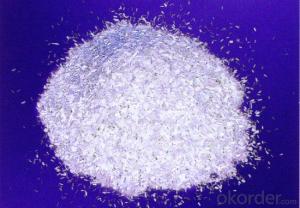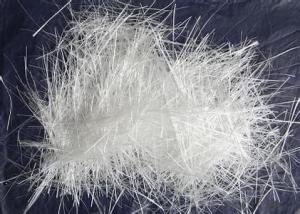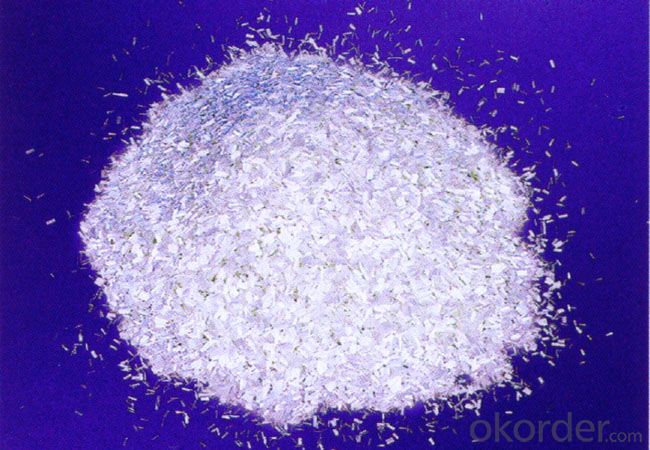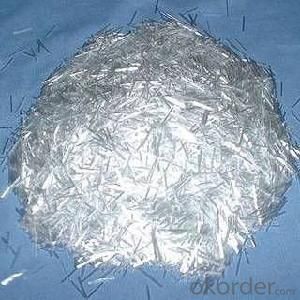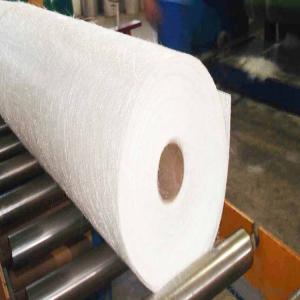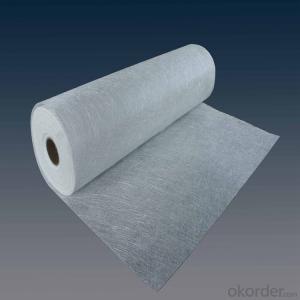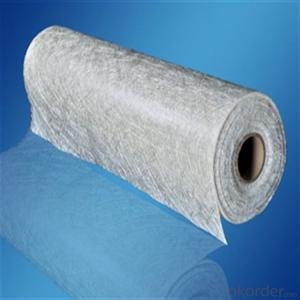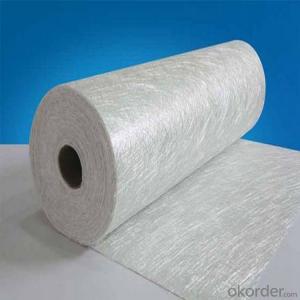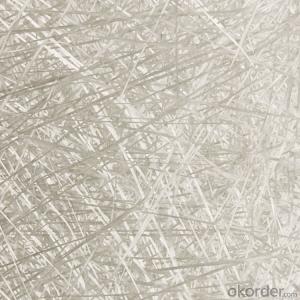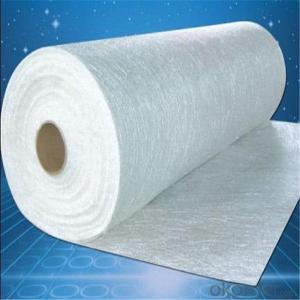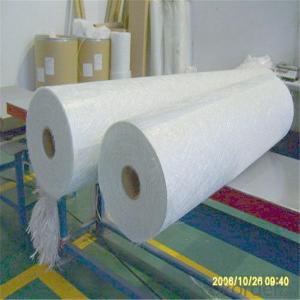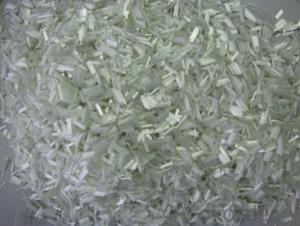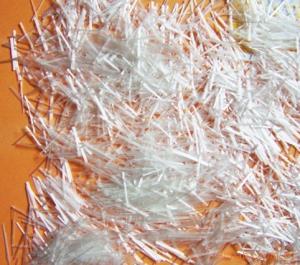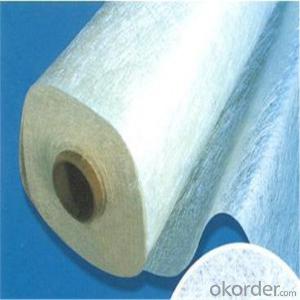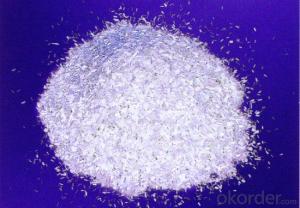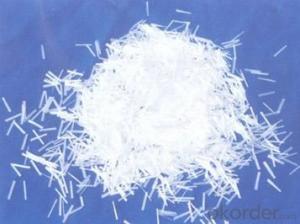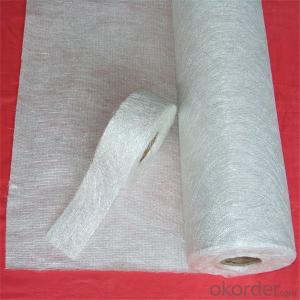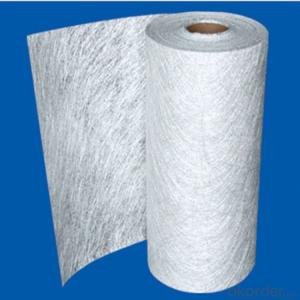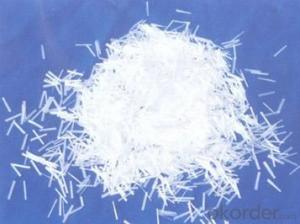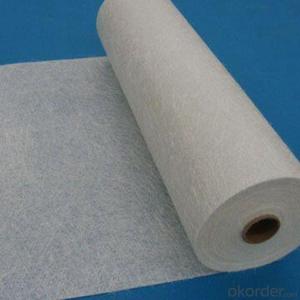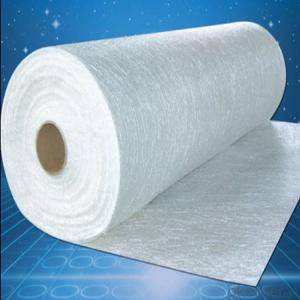1/4 Chopped Strand Fiberglass for Thermoplastics
- Loading Port:
- China Main Port
- Payment Terms:
- TT or LC
- Min Order Qty:
- 20000 kg
- Supply Capability:
- 200000Kg Per Month kg/month
OKorder Service Pledge
OKorder Financial Service
You Might Also Like
1.Brief Introduction
Chopped Stands for Thermoplastic are based on silane coupling agent and special sizing formulation, compatible with PA,PBT/PET, PP, AS/ABS, PC, PPS/PPO,POM, LCP;
E-Glass Chopped Stands for thermoplastic are know for excellent strand integrity, superior flowability and processing property, delivering excellent mechanical property and high surface quality to its finished product.
2.Product Features
Extremely low resin demand, delivering low viscosity to BMC paste
High impact strength; High LOI rate
High strand stiffness; Compatible with rubber
3.Product Specifications
Property | Fibre diameter | Moisture Content | Size Content | Chop |
(%) | (%) | (%) | (%) | |
Mathods | IS01888 | ISO3344 | ISO1887 | |
3mm | ±10 | ≤3.0 | 0.1±0.05 | 98 |
6mm | ||||
9mm | ||||
12mm |
Special specification can be produce according to customer requirements.

4.FAQ
Packaging:
Each bag can be taken (15-25kgs)。 Could also take a big container bag.
Storage:
Unless otherwise specified, It should be stored in a dry, cool and rain-proof area. It is recommended that the room temperature and humidity should be always maintained at 15℃~35℃ and 35%~65% respectively.
- Q: What is the typical length of fiberglass chopped strand?
- The length of fiberglass chopped strand can vary depending on the specific application or industry in which it is utilized, resulting in a typical range. The frequently employed lengths span from 1/8 inch (3 mm) up to 1 inch (25 mm).
- Q: Is fiberglass chopped strand suitable for the production of playground equipment?
- Fiberglass chopped strand is indeed appropriate for the manufacturing of playground equipment. This lightweight and long-lasting material possesses an exceptional strength-to-weight ratio, making it an ideal selection for playground equipment. Its resistance to corrosion, weathering, and UV radiation ensures that the equipment can endure outdoor conditions and remain intact for an extended period. Moreover, fiberglass is non-toxic, guaranteeing the safety of children utilizing the playground equipment. Additionally, fiberglass can be shaped into various forms and sizes, allowing for imaginative designs and customization options for playground equipment. In summary, due to its strength, durability, safety, and versatility, fiberglass chopped strand is a fitting substance for the production of playground equipment.
- Q: Can fiberglass chopped strand be used for reinforcing metal matrix composites?
- Yes, fiberglass chopped strand can be used for reinforcing metal matrix composites. Fiberglass chopped strand is made up of small glass fibers that are randomly oriented and held together with a binder. These fibers can be added to a metal matrix to increase its mechanical properties, such as strength and stiffness. The use of fiberglass chopped strand as a reinforcement in metal matrix composites offers several advantages. Firstly, fiberglass is a lightweight material, which helps to reduce the overall weight of the composite without compromising its strength. This is particularly beneficial in industries where weight reduction is critical, such as aerospace and automotive. Secondly, fiberglass chopped strand has a high tensile strength, which allows it to effectively distribute and transfer stress within the composite. This improves the composite's resistance to deformation and enhances its load-bearing capacity. Lastly, fiberglass chopped strand also provides excellent resistance to corrosion, which is essential in applications where the composite is exposed to harsh environments or chemical substances. However, it is important to note that the compatibility between the fiberglass chopped strand and the metal matrix must be considered. The metal matrix should have good wetting and adhesion properties to ensure a strong bond with the fiberglass fibers. Additionally, the composite fabrication process should be carefully optimized to achieve uniform dispersion and alignment of the fibers within the metal matrix. Overall, fiberglass chopped strand can be successfully used for reinforcing metal matrix composites, offering improved mechanical properties, weight reduction, and corrosion resistance.
- Q: Can fiberglass chopped strand be used in aerospace structures?
- Yes, fiberglass chopped strand can be used in aerospace structures. Fiberglass is a lightweight and strong material that offers excellent strength-to-weight ratio and resistance to corrosion, making it suitable for aerospace applications. Chopped strand mat, which is made up of short strands of fiberglass held together by a binder, can be used in the construction of aerospace structures such as aircraft interiors, cabin components, and non-structural panels. However, it is important to note that specific design and engineering requirements need to be met to ensure the suitability of fiberglass chopped strand for aerospace use, including compliance with regulatory standards and industry specifications.
- Q: How does the fiber length affect the flow behavior of chopped strand composites?
- The fiber length in chopped strand composites directly affects the flow behavior of the material. Longer fibers tend to align better during processing, leading to improved flow and reduced void formation. Shorter fibers, on the other hand, may result in poorer flow behavior and increased likelihood of agglomeration or uneven distribution throughout the composite.
- Q: What are the typical curing conditions for fiberglass chopped strand composites?
- The typical curing conditions for fiberglass chopped strand composites may vary depending on the specific application and desired properties. However, there are some common factors that are typically considered during the curing process. Firstly, temperature plays a crucial role in the curing of fiberglass chopped strand composites. Generally, the curing temperature ranges from 100°C to 180°C (212°F to 356°F). This temperature range allows for the effective activation of the resin matrix, leading to the desired strength and durability of the composite material. The curing time is another important factor. The duration of the curing process is influenced by various factors such as the type of resin used, the thickness of the composite, and the desired properties. Typically, the curing time may range from a few minutes to several hours. It is essential to ensure that the composite is exposed to the curing conditions for the appropriate amount of time to achieve optimal results. Pressure is also considered during the curing process. Applying pressure to the fiberglass chopped strand composite helps in improving the consolidation of the material, reducing voids, and enhancing the overall mechanical properties. The pressure applied can range from a few psi (pounds per square inch) to several hundred psi, depending on the specific requirements. Furthermore, the use of catalysts or accelerators may be necessary to speed up the curing process. These additives help in reducing the curing time and enhancing the overall efficiency of the process. It is worth mentioning that curing conditions may vary depending on the specific resin system used, the desired properties, and the manufacturing process. Therefore, it is important to refer to the manufacturer's recommendations and guidelines to determine the optimal curing conditions for a particular fiberglass chopped strand composite application.
- Q: Is fiberglass chopped strand compatible with other reinforcement materials?
- Indeed, fiberglass chopped strand harmonizes well with other reinforcement materials. By amalgamating it with carbon fiber, Kevlar, or natural fibers, one can fabricate hybrid composites boasting superior mechanical characteristics. The amalgamation of diverse reinforcement materials can result in heightened durability, rigidity, and resistance to impacts within the ultimate composite product. Furthermore, fiberglass chopped strand can be utilized alongside thermoplastic or thermosetting resins, generating composite materials suitable for a wide range of applications in industries like automotive, aerospace, construction, and marine.
- Q: Is fiberglass chopped strand compatible with vinyl ester resin?
- Yes, fiberglass chopped strand is compatible with vinyl ester resin. Vinyl ester resin is a type of thermosetting resin that is commonly used in fiberglass composite applications due to its excellent chemical resistance, mechanical properties, and high heat resistance. Fiberglass chopped strand, which consists of short fibers of glass, is often used as a reinforcement material in composite fabrication. When combined with vinyl ester resin, the chopped strand helps to enhance the strength and stiffness of the composite material. The resin binds the chopped strand fibers together, creating a strong and durable composite that is resistant to various chemicals and environmental conditions. Therefore, fiberglass chopped strand and vinyl ester resin are compatible and can be successfully used together in composite manufacturing processes.
- Q: How does the UV resistance of fiberglass chopped strand affect its performance?
- The UV resistance of fiberglass chopped strand greatly affects its performance. Fiberglass, being a polymer-based material, is susceptible to degradation when exposed to UV radiation. Without proper UV resistance, the chopped strand can become brittle, discolored, and weakened over time, leading to a decrease in its overall performance and durability. UV resistance helps to prolong the lifespan of fiberglass chopped strand by preventing UV-induced degradation, ensuring its strength, stability, and integrity in various applications.
- Q: Can fiberglass chopped strand be used in water slides?
- Yes, fiberglass chopped strand can be used in water slides. It is a commonly used material in the construction of water slides due to its strength, durability, and resistance to water and chemicals.
Send your message to us
1/4 Chopped Strand Fiberglass for Thermoplastics
- Loading Port:
- China Main Port
- Payment Terms:
- TT or LC
- Min Order Qty:
- 20000 kg
- Supply Capability:
- 200000Kg Per Month kg/month
OKorder Service Pledge
OKorder Financial Service
Similar products
Hot products
Hot Searches
Related keywords
